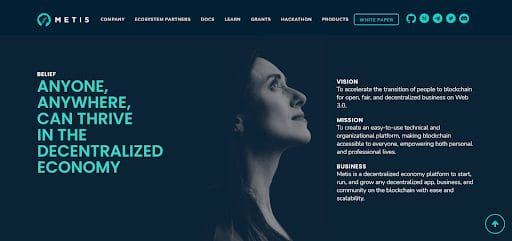
Metis DAO, a protocol that allows the creation and deployment of Decentralized Autonomous Company stacks in a few clicks, has reportedly agreed to switch to Optimism’s proposed OVM 2.0 model with the launch of Andromeda.
OVM 2.0 has been a subject of much heated debate in recent times, with Metis refusing to come to terms with the new framework of the Layer 2 network on key areas.
However, the DAO has agreed to migrate to the new Optimism framework from its EVM Compatible model, with security, decentralization, scalability, and performance in focus.
According to Metis, the launch of Andromeda would be preceded by the deploying a new testing with EVM Equivalence to ensure that everything runs smoothly before Andromeda. Moreover, Andromeda is set to launch on November 15th.
Offering Solutions to Metis’s OVM 2.0 Switch
One reason for the proposed switch to OVM 2.0 is to solve the issue of migration and compatibility, which many DApps developers have been lamenting about. However, the new OVM Model poses some issues that aren’t in line with Metis DAO’s vision to offer maximum scalability in a complete decentralization manner. Hence, the launching of Andromeda.
Before the proposed launch of EVM Equivalence, also known as OVM 2.0, EVM Compatibility was what Metis DAO relied on. The initial version was effective and scalable, with low transaction and latency. The scaling solution enjoyed the benefits of Ethereum’s security and decentralization.
Optimism revealed that they received several complaints about migration and compatibility issues with the EVM Compatibility model regarding the current DApps. Metis shared in Optimism’s sentiments and agreed that a new infrastructure was imminent.
According to Metis, Optimism’s EVM Equivalence opposed the DAo’s vision and goals to offer complete decentralization. Optimism disclosed that OVM 2.0 will not offer the same level of decentralization as EVM Compatibility, which would require Metis to compromise on its core concepts.
Optimism also noted that DApps would have to modify the lower-level code that the Ethereum Network relies on to migrate to Layer 2 (OVM). According to Metis, migrating to the new model comes at a price that the DAO could afford. The design will change implementation of Optimistic Rollups and affect consensus on Layer 1 regarding on-chain transactions.
Since Ethereum’s EVM Equivalence will solve the problem of compatibility, launching Andromeda will create a common ground where OVM 2.0 and Metis DAO will coexist without compromising on Metis’s DNA. With Andromeda, Metis will continue to build a Layer 2 Ethereum Rollup that facilitates cheap transactions, the use of no-code middleware approach to enable everyone migrate to Layer 2 without issues, and establish a system that will allow anyone to build decentralized businesses on-chain.
Following the Metis Ranger System
According to Metis, Andromeda will follow the design of the DAO’s Ranger System. This system uses a sequencer pool model that adds a level of redundancy and decentralization that a typical rollup structure can’t.
The model will use the peer network, where verifiers will be added to the pool to verify transactions, challenge sequencers, and initiate fraud proofs based on the Layer 1 consensus reached by the rangers. Sequencers will be penalized, taken offline, and be replaced by another from the pool fairly.
Andromeda will allow developers to harness the power of community to create their own DACs on Layer 2, stake, and gain rewards.
The post Metis DAO Plans the Launch of Andromeda to Complement OVM 2.0 Switch appeared first on The Cryptonomist.





















